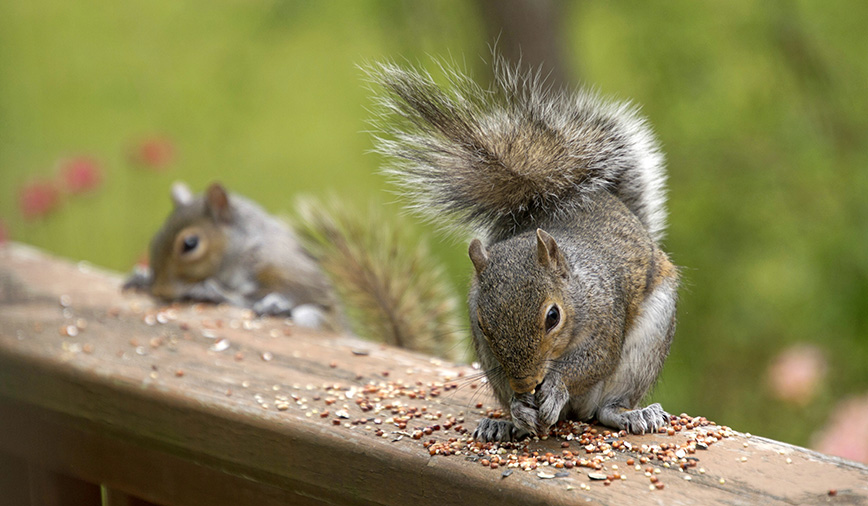Pam’s Perspective
From the…
Pam Otto is the Manager of Natural Programs and Interpretive Services for the St. Charles Park District
August 9, 2013
Okay everybody, think fast: Who, or what, comes to mind when you hear the word blonde? Certain movie stars? Various jokes? The debate about who it is that has more fun?
How about…squirrels?
Way back in April I received an email from Susan Cira of St. Charles. She described a new visitor to her yard, one with a tail she described as “the most beautiful blonde.” Thing was though, it didn’t match the rest of the gray squirrel’s body.
“It looked,” she noted, “like he bought it at a garage sale.”
A little bit of Googling and a couple of phone calls later, we learned that this squirrel’s odd, blonde coloration, while not unheard of, was definitely unusual—more so even than the black squirrels that pop up occasionally around the TriCities.
It all comes down to pigmentation and the hereditary units that control them, the genes.
If you only pay squirrels a passing glance, it would seem that they all look pretty much alike. The gray ones, Sciurus carolinensis, are medium-gray tinged with just a bit of white and reddish brown; their bellies are white and their eyes are dark. (The other guys, frequently called red squirrels, are Sciurus niger, the fox squirrels. They too have gray on their bodies but their “overcoat,” tail and belly are reddish orange. At 2-plus lbs. they’re also twice as heavy as their cousins the grays.)
If you start to look a little more closely, though, you’ll notice that each squirrel has its own individual characteristics. A belly that’s light tan instead of white. More brown on the face. Less red on the feet. Before
long you’ll realize that, just like snowflakes (and people, and most other natural objects) no two squirrels are exactly alike.
These color variations, which are even more pronounced when you start comparing squirrels from different regions, are the result of a pigment called melanin. A squirrel’s unique genetic makeup controls the amount of pigment as well as the type–eumelanin (which produces black and brown tones in the fur) and phaeomelanin (which produces reds and yellows).
Other gene sequences control where these pigments occur. That’s how we can end up with squirrels that are primarily gray, but have a blonde tail.
Or…a squirrel that is primarily gray, with a characteristically gray and brown tail that happens to have a small patch of blonde fur on it.
Yep, you guessed it, Susan Cira emailed again, just the other day, with an update to her tale of the squirrel with the blonde tail. S/he appears to have a progeny, a youngster whose genetic makeup, like that of dear old dad, or mom, called for an abundance of eumelanin. But instead of an entirely blonde tail, this new young guy or gal has it in just one spot.
Even though these markings are quite obvious, and make it easy for Susan to see just who’s eating her birdseed, the odd coloration doesn’t appear to help, or hamper, either squirrel in any way. “The other squirrels don’t seem to notice the difference,” she said in her email.
Given that Blondie No. 1 survived to adulthood, it would seem that the nonconformity matters little to predators either. Like most of our common wildlife, squirrels typically have a high mortality rate—anywhere from 70% to 85% do not make it through their first year. Yet No. 1 is still hanging in there, defying the odds. With its bright eyes and bushy, gold-hued tail, this handsome squirrel may be proof positive that blondes do indeed have more fun.
Pam Otto is the manager of nature programs and interpretive services at the Hickory Knolls Discovery Center, a facility of the St. Charles Park District. She can be reached at 630-513-4346 or potto@stcparks.org.

